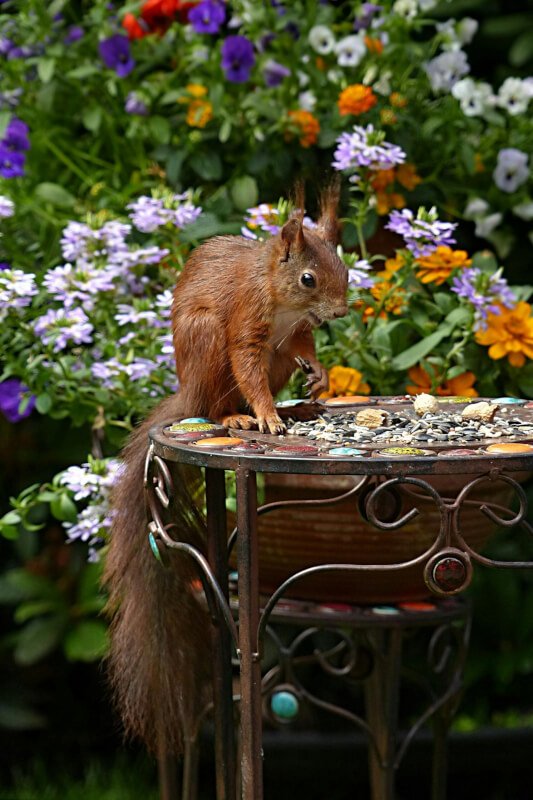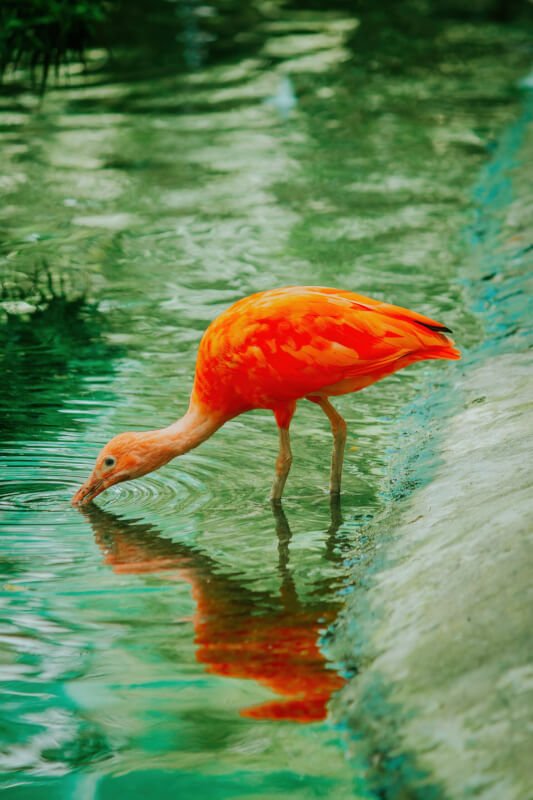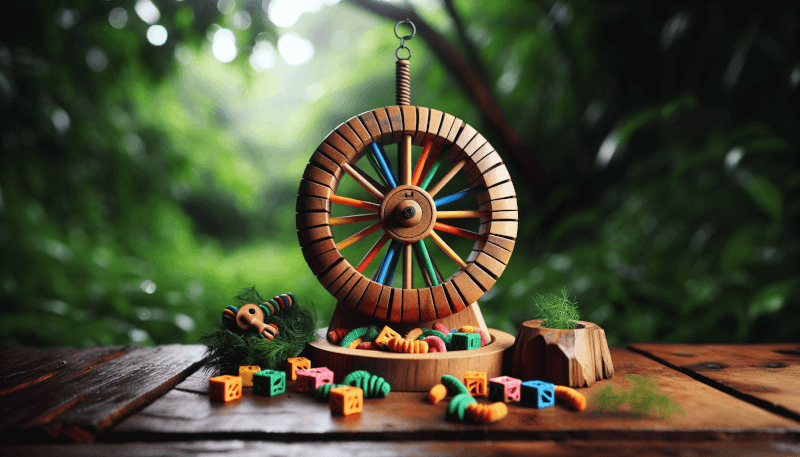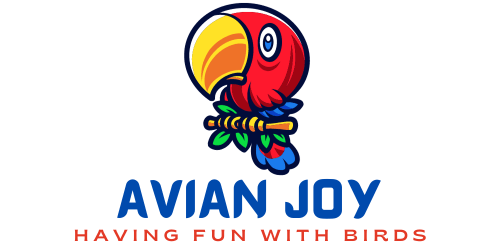Discovering innovative ways to promote foraging behavior in order to enhance mental and physical well-being is a topic of growing interest. By engaging in activities that tap into our innate hunting and gathering instincts, we not only stimulate our cognitive faculties but also improve our overall fitness. This article explores a myriad of ways to encourage foraging behavior, providing practical and creative suggestions to help you incorporate this enriching practice into your daily routine. From creating DIY foraging toys to designing scavenger hunts, there are countless opportunities for you to experience the benefits of foraging firsthand. So, let’s delve into the world of foraging and unlock its potential for mental and physical enrichment. Are you looking for ways to stimulate your pet’s natural foraging behavior? Foraging is not only an instinctual activity for animals but also provides mental and physical enrichment. By encouraging foraging, you can keep your pet mentally stimulated, physically active, and provide them with a fun and engaging way to feed. In this article, we will explore a variety of ways you can create a foraging environment for your pet that will cater to their natural instincts and keep them entertained.
Create a Foraging Area
One of the first steps in encouraging foraging behavior is to designate a specific area for your pet to forage. This area can be in your home, such as a certain corner of the room or a designated space in their enclosure. By having a designated area, your pet will understand that this is their foraging zone and it will help to focus their attention on the activity at hand.
When setting up the foraging area, it is important to provide hiding spots for the food. This mimics the natural environment where animals have to search and dig for their food. You can use various materials such as cardboard boxes, tunnels, or even fabric to create hiding spots for the food. These hiding spots will not only add an element of challenge but also make the foraging experience more exciting for your pet.
To make the foraging area even more appealing, consider using natural materials. Natural materials such as wood, leaves, or grass can add a more realistic and sensory experience for your pet. The textures and scents of these materials can further enhance their foraging experience, making it more engaging and enjoyable.
Use Puzzle Feeders
Puzzle feeders are a great way to stimulate your pet’s foraging behavior. They provide mental and physical challenges that your pet has to overcome in order to access their food. Introducing puzzle feeders can be done gradually, starting with simpler puzzles and gradually increasing the difficulty as your pet becomes more proficient.
There are various types of puzzle feeders available on the market, so it’s important to try different ones to see which ones your pet enjoys the most. Some puzzle feeders involve sliding pieces, while others require your pet to lift or manipulate objects to access their food. By using a variety of puzzle feeders, you can keep your pet engaged and prevent them from getting bored with the same type of challenge.
Remember to increase the difficulty of the puzzles gradually. This will allow your pet to build their problem-solving skills and prevent frustration. As they become more experienced, you can make the puzzles more challenging by increasing the number of steps required to access the food or by using more complex puzzle designs.

Variety of Textures
Incorporating a variety of textures in your pet’s foraging experience can add an extra level of interest and engagement. Just like humans, animals enjoy different textures and exploring new sensations. By offering a variety of textures, you can provide a more enriching foraging experience for your pet.
Include rough, smooth, and soft materials in the foraging area. For example, you can use rough-textured objects like bark or twigs, smooth materials like fabric or plastic, and soft materials like plush toys or feathers. Changing the textures regularly will prevent your pet from becoming accustomed to the same sensations and will keep them interested and engaged.
You can also consider adding tactile elements to the puzzle feeders themselves. For example, you can attach different textures to the puzzle pieces or hide food in or under different materials. This will provide a multi-sensory experience for your pet and make foraging even more enjoyable.
Scent Enrichment
Scent enrichment is a powerful tool to enhance foraging behavior in animals. By using scented items, you can make the foraging experience more exciting and appealing to your pet. Scent enrichment can be achieved by hiding food in scented objects or by utilizing herbs and spices as scent stimuli.
When hiding food in scented objects, you can use items such as fabric toys, hollow bones, or even small containers filled with scented materials. The scent will attract your pet’s attention and encourage them to engage in the foraging activity. Herbs and spices can also be used to add scent to the foraging area or the puzzle feeders. For example, you can sprinkle some dried catnip or lavender on the puzzle pieces or incorporate them into the hiding spots. The scent will add an extra level of interest for your pet and make the foraging experience more enjoyable.
When using scented items, it’s important to ensure that the scents are safe for your pet. Avoid using any substances that may be toxic or harmful to them. Always research and consult with your veterinarian before introducing any new scents or materials into your pet’s environment.

Adjustable Foraging Difficulty
To keep your pet engaged and prevent boredom, it is important to adjust the difficulty level of the foraging tasks. Starting with easier challenges and gradually progressing to more complex ones will help your pet build their foraging skills and keep them mentally stimulated.
Begin with simple puzzles or easy hiding spots that your pet can easily access. As they become more proficient, you can increase the difficulty by making the puzzles more challenging or hiding the food in harder-to-reach places. By constantly evolving the foraging difficulty, you can continue to challenge your pet and prevent them from losing interest in the activity.
Keep in mind that every pet is different, and what may be challenging for one may be too easy for another. Observe your pet’s behavior and adjust the difficulty level accordingly. The goal is to provide them with a stimulating and engaging foraging experience that suits their individual abilities and preferences.
Introduce Natural Obstacles
Creating natural obstacles in the foraging area can take the experience to the next level for your pet. By using tree branches, rocks, or logs, you can create challenges that require problem-solving and physical activity. These obstacles can be strategically placed to encourage your pet to navigate around them in order to access their food.
For example, you can place a large log in the center of the foraging area, making it necessary for your pet to climb or go around it to reach their food. This not only stimulates their natural instincts but also provides them with physical exercise and mental stimulation.
It’s important to ensure the safety of your pet when introducing natural obstacles. Make sure that the obstacles are stable and do not pose any risks of injury. Supervise your pet during the foraging activities to ensure that they navigate the obstacles safely.

Outdoor Foraging Opportunities
In addition to indoor foraging, providing your pet with outdoor foraging opportunities can greatly enhance their overall foraging experience. Outdoor foraging allows your pet to explore natural spaces, engage with their environment, and experience new sights, sounds, and smells.
Consider creating a foraging garden specifically designed for your pet. This can be an enclosed area in your backyard or even a designated space on your balcony or patio. Planting pet-friendly herbs, grasses, and flowers can create a natural foraging environment for your pet. You can hide food or treats among the plants and let your pet explore and discover them.
When providing outdoor foraging opportunities, it is essential to ensure the safety and supervision of your pet. Make sure the area is secure, free from any toxic plants, and free from any potential hazards. Additionally, monitor your pet closely to prevent them from escaping or coming into contact with any harmful substances.
Food Dispensing Toys
Food dispensing toys are a wonderful way to provide your pet with mental and physical enrichment while engaging their foraging behavior. These toys require your pet to work for their food by manipulating or solving puzzles to access it. The challenge and reward aspect of food dispensing toys mimic natural foraging behavior, making them highly engaging for your pet.
When selecting food dispensing toys, choose ones that challenge your pet and require them to actively interact with the toy. Look for toys that can be filled with a variety of foods or treats and have different mechanisms for dispensing the food. By combining different types of food dispensing toys, you can provide a diverse and stimulating foraging experience for your pet.

Rotate Food Options
To keep your pet’s foraging experience exciting and prevent them from getting bored, it is essential to rotate the types of food offered. Including different flavors and textures can add variety to their diet and make the foraging experience more enjoyable.
Experiment with different types of food, such as kibble, freeze-dried treats, or fresh fruits and vegetables. Hide these different food options in the foraging area or use them in the puzzle feeders to stimulate your pet’s interest and keep them engaged. Surprise your pet with unexpected food choices and observe their excitement as they discover and enjoy new flavors.
When rotating food options, it is important to consider your pet’s dietary requirements and consult with your veterinarian. Ensure that the foods you offer are safe and appropriate for your pet’s species, age, and health condition. The goal is to provide a varied and balanced diet while keeping the foraging experience enjoyable and stimulating.
Social Foraging Activities
Foraging can be made even more fun and engaging by involving your pet in social foraging activities. Organizing group scavenger hunts or treasure hunts with other pets or family members can provide mental stimulation and social interaction for your pet.
Set up a scavenger hunt in your home or backyard, hiding food or treats for your pet to find. You can invite other pet owners to join in, allowing your pets to interact and engage in a friendly competition. This not only stimulates their foraging instincts but also provides an opportunity for socialization and mental stimulation.
When organizing social foraging activities, ensure the safety and well-being of all participating pets. Supervise the activities closely to prevent any conflicts or accidents. Create a positive and rewarding environment where pets can enjoy each other’s company while engaging in foraging behavior.
In conclusion, encouraging foraging behavior can provide mental and physical enrichment for your pet. By creating a foraging area, using puzzle feeders, offering a variety of textures, incorporating scent enrichment, adjusting the difficulty level, introducing natural obstacles, providing outdoor foraging opportunities, using food dispensing toys, rotating food options, and engaging in social foraging activities, you can create a stimulating and engaging foraging experience for your pet. Remember to always consider your pet’s individual abilities, preferences, and safety when implementing these activities. By promoting foraging behavior, you can provide your pet with a fulfilling and enriching experience that satisfies their natural instincts and keeps them healthy and happy.



